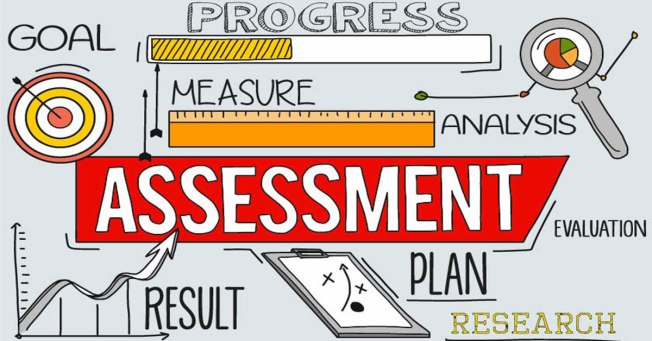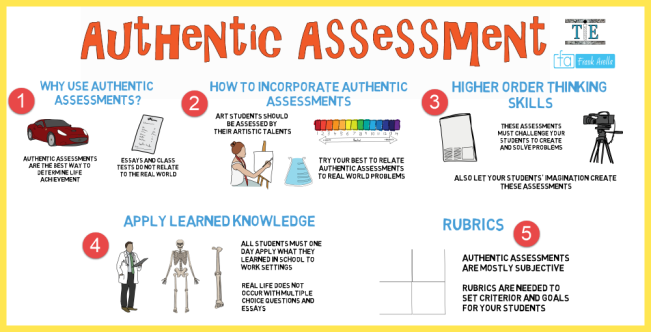
Assessment is an important part of learning because this gauges the level of understanding as well as mastery of the students. However, only a well crafted assessment can do the job, or else, it is just another requirement that adds on the to-do list of teachers and students.
One of the most striking part of the resources that I have read was the assessment should also be closed to real life needs of the learners and through this kind of assessment, learning will be enriched because it relates more closely to the needs of the students. Upon reading the resources, I made a note for me to easily understand the salient points of two assessments and understand the use of each to teaching and learning.
|
Traditional assessment |
Authentic assessment |
| “traditional assessment” (TA) I am referring to the forced-choice measures of multiple-choice tests, fill-in-the-blanks, true-false, matching and the like that have been and remain so common in education. | |
| Students typically select an answer or recall information to complete the assessment. | |
| These tests may be standardized or teacher-created | |
| Traditional assessment is grounded in educational philosophy that adopts the following reasoning and practice:
1. A school’s mission is to develop productive citizens. 2. To be a productive citizen an individual must possess a certain body of knowledge and skills. 3. Therefore, schools must teach this body of knowledge and skills. 4. To determine if it is successful, the school must then test students to see if they acquired the knowledge and skills |
authentic assessment (AA) springs from the following reasoning and practice:
1. A school’s mission is to develop productive citizens. 2. To be a productive citizen, an individual must be capable of performing meaningful tasks in the real world. 3. Therefore, schools must help students become proficient at performing the tasks they will encounter when they graduate. 4. To determine if it is successful, the school must then ask students to perform meaningful tasks that replicate real world challenges to see if students are capable of doing so. |
| the curriculum drives assessment.
“The” body of knowledge is determined first. That knowledge becomes the curriculum that is delivered. Subsequently, the assessments are developed and administered to determine if acquisition of the curriculum occurred. |
assessment drives the curriculum.
teachers first determine the tasks that students will perform to demonstrate their mastery, and then a curriculum is developed that will enable students to perform those tasks well, which would include the acquisition of essential knowledge and skills. This has been referred to as planning backwards (e.g., McDonald, 1992). |
Of the two kinds of assessments, traditional and authentic, I find the latter more appropriate and has the potential to enhance critical thinking and promote self-directed learning among learners. This is because authentic assessments or also known as performance assessment, requires learners to apply what they’ve learned in their own context or their own authentic setting. According to Mueller (2018) authentic assessment is a form of assessment in which students are asked to perform real-word tasks that demonstrate meaningful application of essential knowledge and skills.
In my experience of delivering training to community based organizations, performance assessment or activities that would gauge their understanding through their authentic settings, were always effective because they were able to articulate their answers as well as justify their outputs because they are the one who experienced them. They have confidence to begin with to share or articulate their views and responses because the primary source of those experiences are them, the learners.
Through performance based or authentic assessment, our organization was able to gauge the effectiveness of the training curriculum because those activities are the building blocks to tests if all the objectives are met, and authentic assessments are our measures if the mode of deliveries are effective to understand the concept as well as relating and applying those concepts to real life.
Reference:
Mueller, Jon(2018). Authentic Assessment Toolbox. Retrieved at http://jfmueller.faculty.noctrl.edu/toolbox/whatisit.htm
Osborn, Leah & Neil, Judith (2005). Performance Assessment in Online learning. Retrieved at https://wnmu.instructure.com/courses/289526/files/15291374/download?wrap=1
